Experienced houseplant collectors and those new to the addictive hobby all flock to philodendrons. And it is understandable why they do. This stunning plant family has a wide range of species and cultivars. In fact, there are over 450 options to choose from! So, philodendron fans have the opportunity to find one that speaks to them, fits their aesthetic, and offers an eye-popping addition to a houseplant collection. Many people opt for species or cultivars that have something unique to offer. One of those highly fascinating hybrids is the painted lady philodendron. In case this lovely plant catches your eye, you will want to know how to care for it. We have gathered a comprehensive care guide to help you, including 8 tips for a healthy plant.
What Is a Painted Lady Philodendron?

The painted lady is famous for its red and pink stems and pink flowers.
©gailhampshire from Cradley, Malvern, U.K, CC BY 2.0 <https://creativecommons.org/licenses/by/2.0>, via Wikimedia Commons – Original / License
The Painted Lady philodendron (Philodendron erubescens ‘Painted Lady’) is a hybrid. It is a semi-rare perennial climbing plant belonging to the Araceae family and native to South America. This lovely philodendron has large yellow and green variegated leaves. The painted lady is also beloved for its red and pink stems, which offer an eye-catching contrast to the foliage.
It grows best in USDA Hardiness Zones 9 to 12. The prized green and white flowers develop in the spring and summer.
However, there is one key note to pay attention to. The painted lady philodendron is toxic to humans and pets. So, it may not be the best choice for you if you have kids or pets.
Since this hybrid is relatively low-maintenance and ideal for beginners. Nearly any gardener, new or experienced, can find success with this beautiful plant. All it takes is understanding how to properly care for it. Here are some tips to get you started.
| Common Name | Painted Lady Philodendron |
| Scientific Name | Philodendron erubescens ‘Painted Lady’ |
| Native Region | South America |
| Size | 5 feet tall and 3 feet wide at maturity |
| Soil Preference | Moist and rich in organic matter |
| Sun | Partial shade |
| USDA Hardiness Zones | 9 to 12 |
1. Proper Light
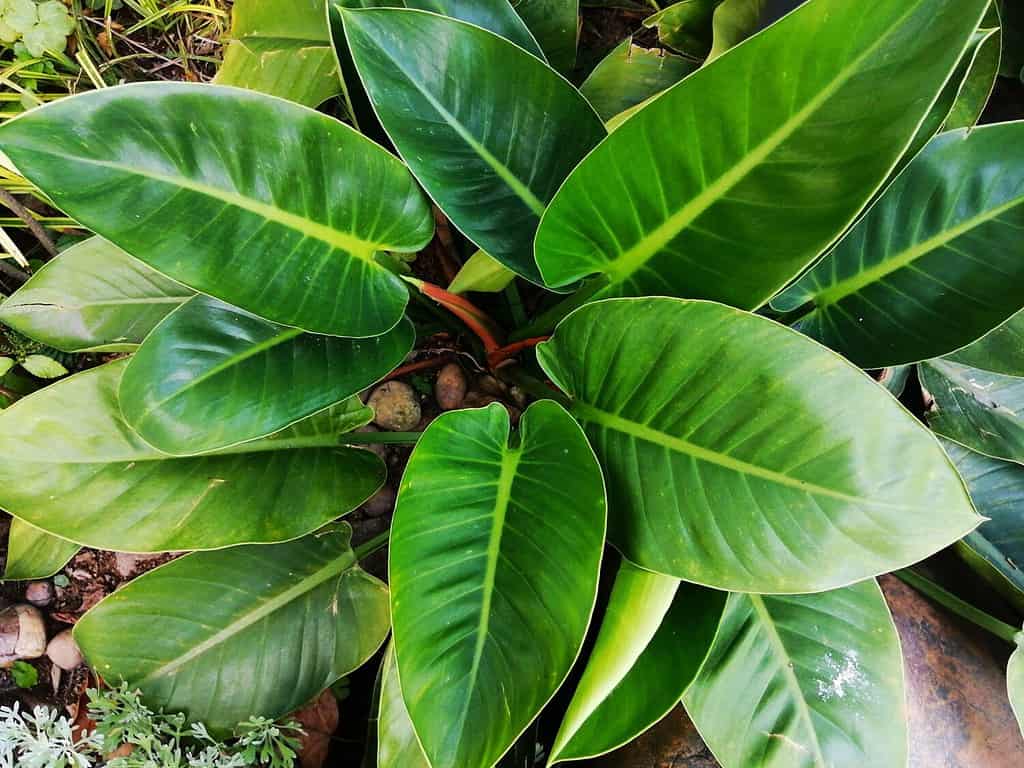
All philodendron species require plenty of dappled sunlight.
©Hanna Yohanna/Shutterstock.com
Like many philodendron hybrids and cultivars, the painted lady requires at least six hours of indirect sunlight daily. Too much direct sunlight can damage the leaves and even burn them. However, too little light can stunt its growth. When any plant, including this philodendron, doesn’t get ample light, it starts to stretch and become leggy.
Not all homes have the right amount of natural light available. That can easily be remedied. Feel free to add a grow light to ensure your painted lady receives the right amount of light.
2. Adequate Watering
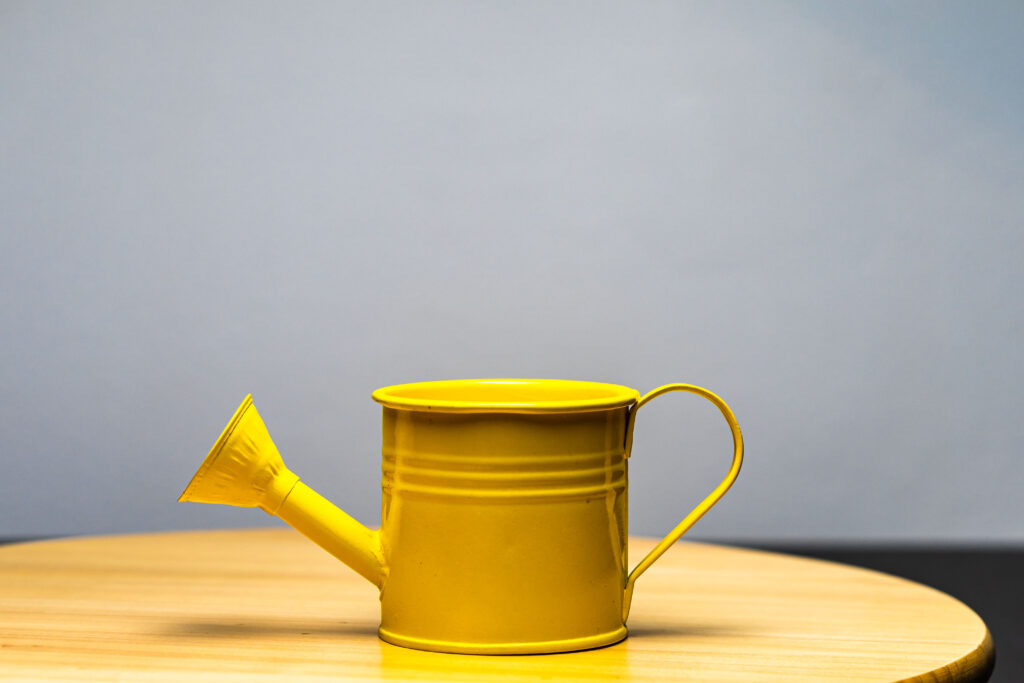
Pay close attention to how much water you offer your painted lady philodendron. Too much or too little can harm it.
©iStock.com/Wirestock
Philodendrons are tropical plants that require plenty of water. But they don’t like soggy “legs.” When they receive more water than the roots can soak up, you run the risk of root rot, which can kill your painted lady. Wait until the top two inches of soil are dry before adding more water. One easy way to check is to stick your finger down into the soil to the knuckle. If it’s dry, feel free to water. But if it’s still damp, hold off.
Your painted lady also needs significantly less water in the fall and winter since it doesn’t do any active growing during these seasons. Let the soil dry out almost completely before adding additional water.
Your plant will show early signs of distress that may indicate improper watering. If yellow leaves show up on the painted lady, they could indicate overwatering or underwatering. Take the time to evaluate your process and make adjustments where needed.
3. Establish Proper Temperature and Humidity Levels

Consider adding a small humidifier near your plants to help provide the proper environment.
©DimaBerlin/Shutterstock.com
The main issue you will likely face is establishing (and maintaining) the correct temperature and humidity levels. Keep your home’s temperature between 65 to 85 degrees Fahrenheit (18 to 26 degrees Celsius) to ensure your painted lady thrives. That isn’t as challenging for most homeowners. However, it is vital to keep your philodendron away from any areas that have some sort of drafts, including AC units and heating vents. The fluctuation in temperature can stress the plants out.
What is slightly more challenging is the humidity levels. Painted lady philodendrons will do fine in standard households. But they thrive in higher humidity levels — somewhere between 60% and 70%.
A few ways to boost the humidity levels for optimum philodendron growth are to place the plant in a laundry room or bathroom, put it on a pebble tray that you keep filled with water, or add a humidifier nearby.
4. Proper Soil

Philodendrons need soil with ample organic matter.
©sasirin pamai/Shutterstock.com
Painted lady philodendrons require loose, well-draining soil. They also need soil with ample organic matter. Regular potting soil is typically too dense for these lovely plants. However, you can mix it with some perlite to loosen it up and generate an airier medium.
5. Avoid Over Fertilizing
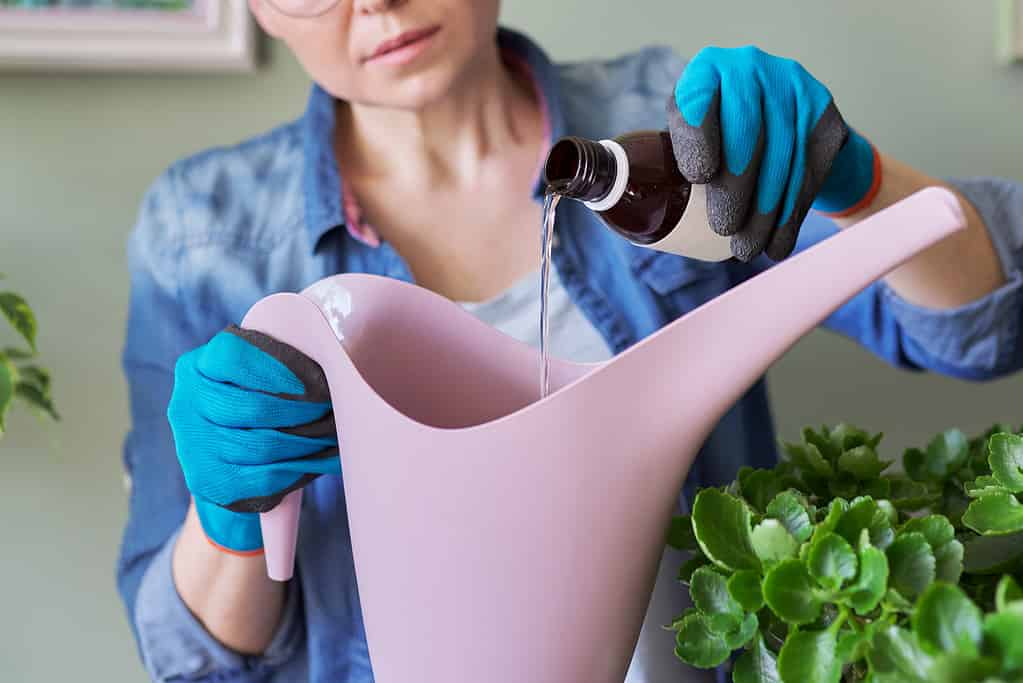
Add a balanced, water-soluble fertilizer to your philodendrons approximately once a month during peak growing season.
©Valeriy_G/iStock via Getty Images
Many people rely pretty heavily on fertilizers to help their houseplants, fruits, and vegetables develop luscious foliage. That is not a bad thing since it does help plants grow and thrive. However, painted lady philodendrons don’t need excess fertilizer. Finding the right balance is key.
Add a balanced, water-soluble fertilizer approximately once a month during peak growing season. These plants don’t need more than that if they are potted in rich soil. Once the peak growing season ends (starting in the fall), stop adding any fertilizer. Painted lady plants don’t need any extra nutrition during their dormancy period.
6. Don’t Repot Too Frequently
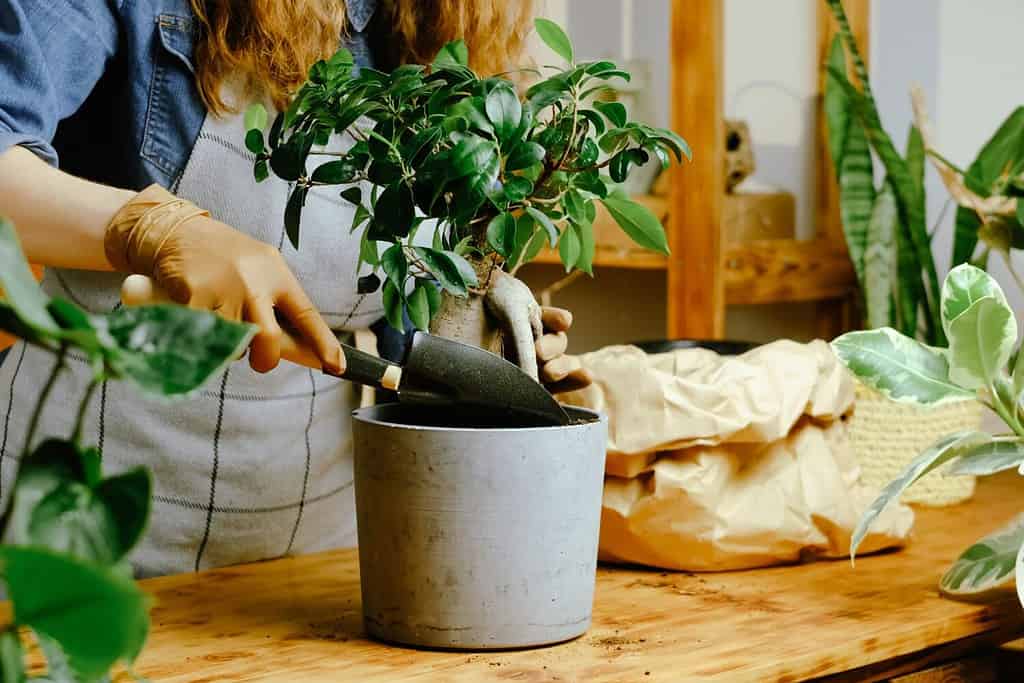
Only transplant your
Philodendron erubescenswhen its roots start to grow out of the pot or it becomes obviously rootbound.
©Meteoritka/Shutterstock.com
Since painted lady philodendrons have a moderate growth speed (at best), they don’t need to get repotted frequently. Moving them up to a larger container before they are ready may also lead to root rot since it will be difficult for the plant to soak up excess moisture.
Once you notice the roots encircling the pot or growing out through the drainage holes, it is ready for a new container. Replace as much of the soil as possible to prevent the transfer of any diseases or pests.
7. Watch for Pests and Diseases
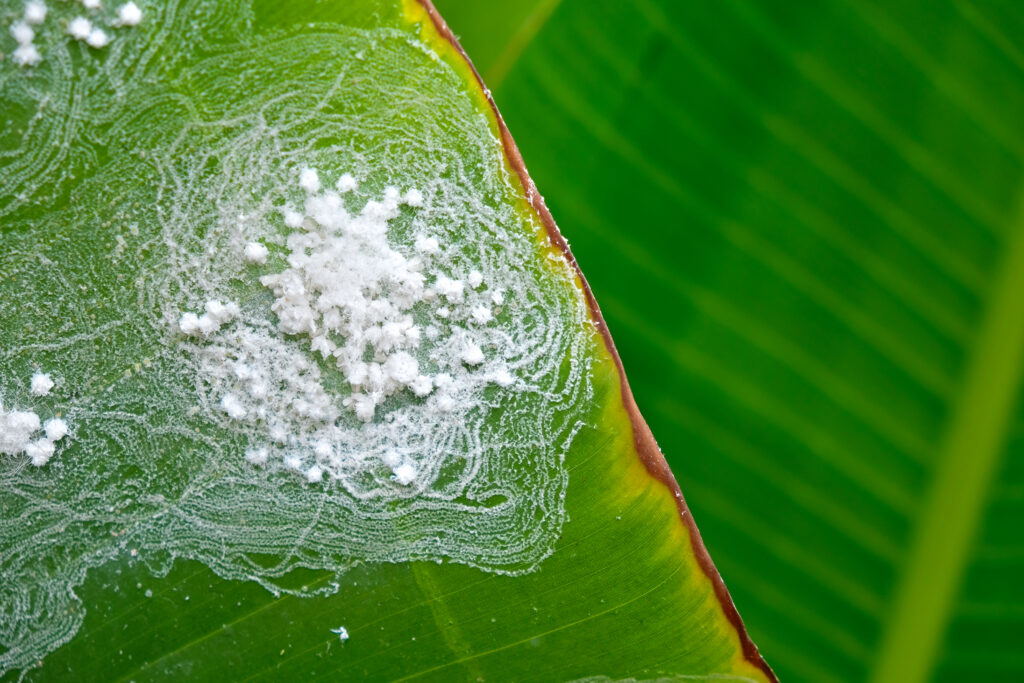
Spider mites, aphids (pictured), and mealybugs regularly find a home in philodendrons.
©daguimagery/Shutterstock.com
Despite the fact the painted lady philodendron is a houseplant, it still faces pest woes. Spider mites, aphids, and mealybugs regularly find a home in the beautiful plant. When left unaddressed, they can damage the foliage, stunt the plant’s growth, and even kill it. Make sure to inspect your plant regularly for signs of infestation and address them promptly.
And while philodendrons aren’t prone to too many diseases, they struggle with fungal leaf spots. Watch for any small rust-colored spots, which is often the first sign of trouble. Carefully prune away the impacted foliage to prevent spread. You can also treat your plant with a store-bought fungicide.
8. Add a Trellis

Provide your philodendron with a trellis or arch (pictured) to help it reach its full growth potential and showcase its stunning foliage.
©ToriNim/Shutterstock.com
One of the most attractive things about the painted lady philodendron is its trailing habit. It loves to stretch out and needs support to do so. Add a stake, trellis, or other creative structure to give the plant something to grab onto. Adding some sort of trellis support will help the foliage grow thicker and lusher.
The photo featured at the top of this post is © Hanna Yohanna/Shutterstock.com
Thank you for reading! Have some feedback for us? Contact the AZ Animals editorial team.







